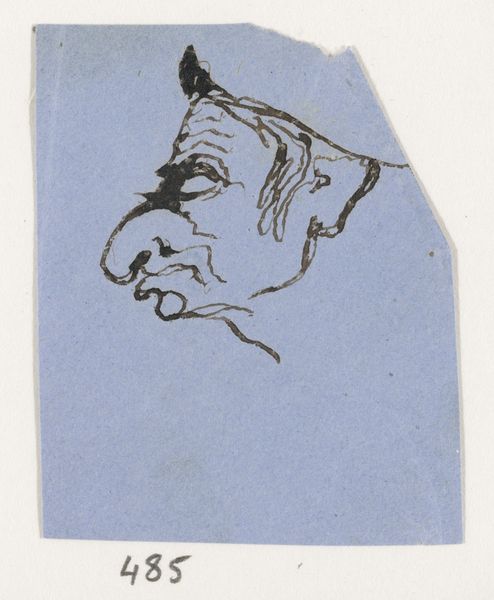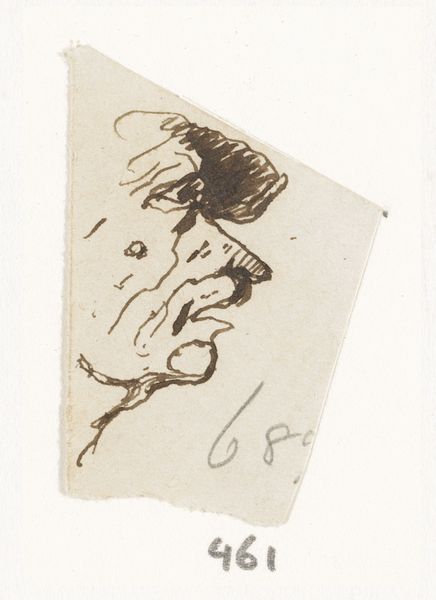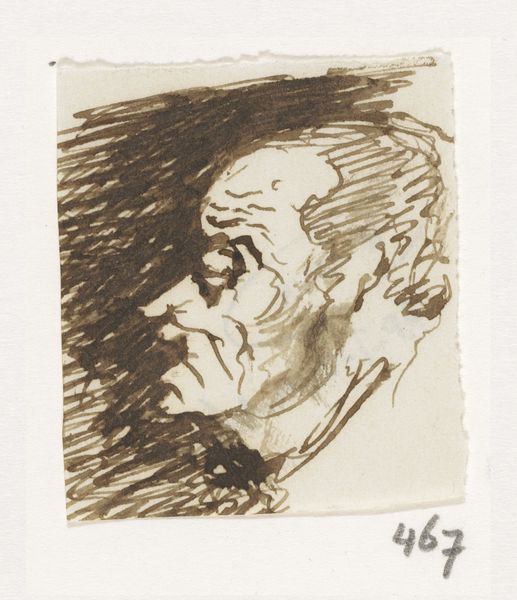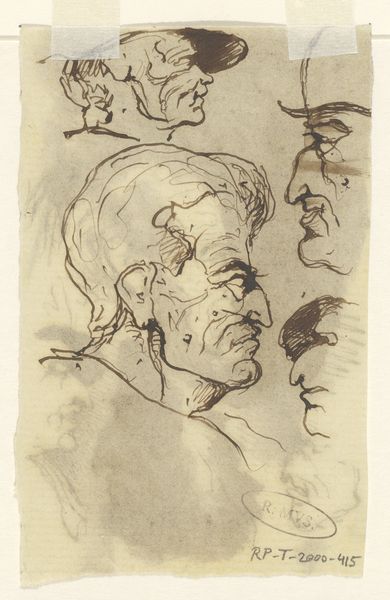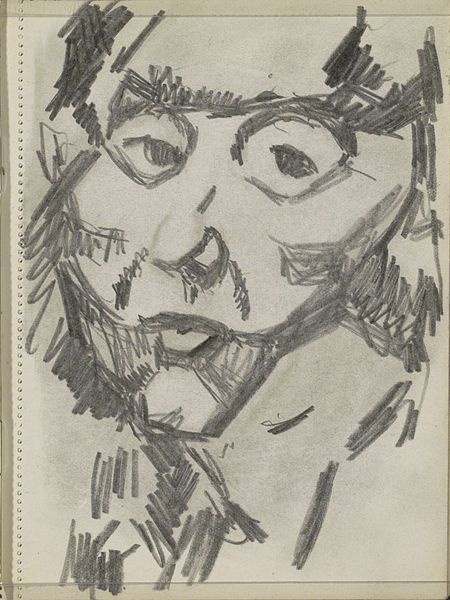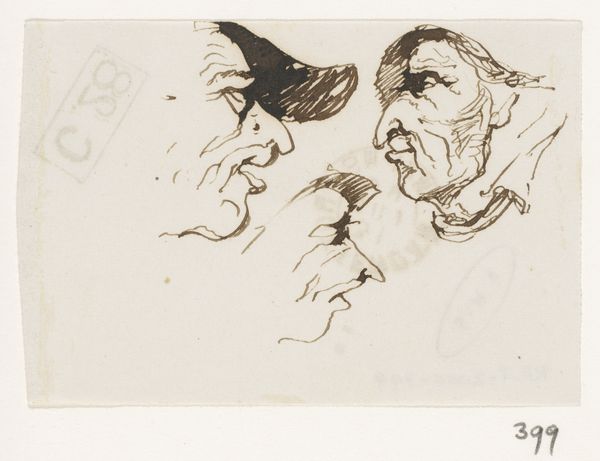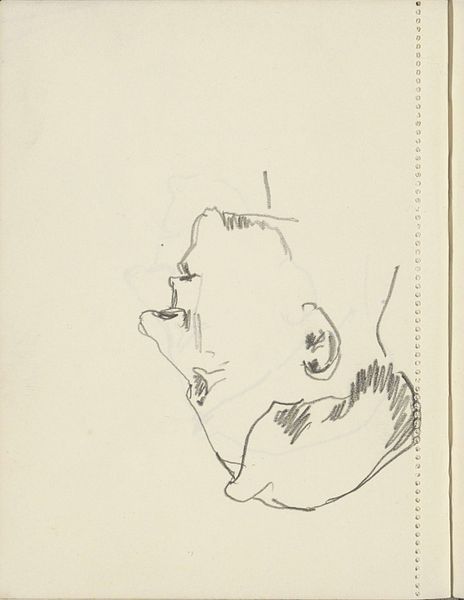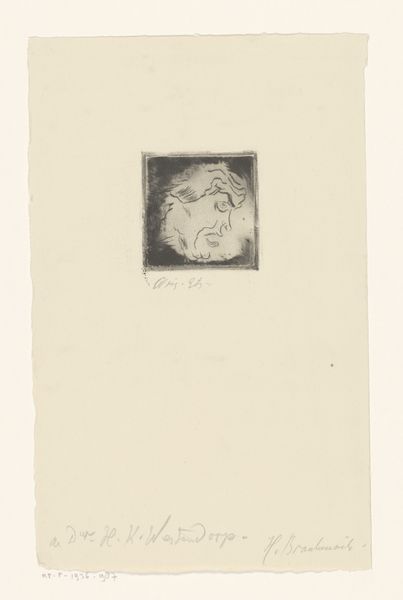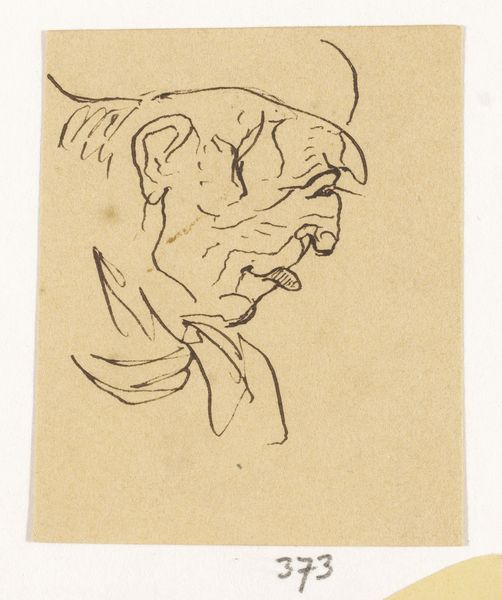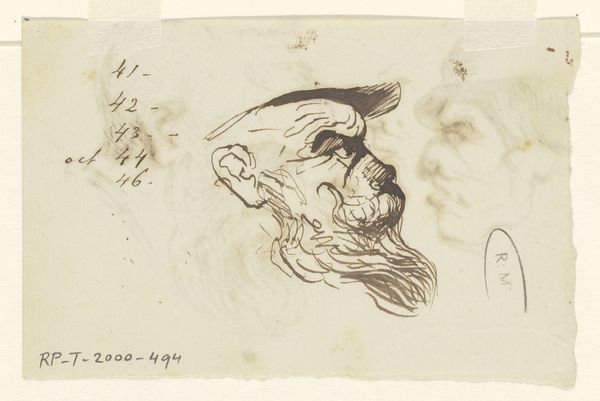
drawing, ink
#
portrait
#
drawing
#
amateur sketch
#
imaginative character sketch
#
quirky sketch
#
pencil sketch
#
figuration
#
personal sketchbook
#
ink
#
idea generation sketch
#
sketchwork
#
ink drawing experimentation
#
line
#
sketchbook drawing
#
sketchbook art
Dimensions: height 80 mm, width 74 mm
Copyright: Rijks Museum: Open Domain
Curator: Welcome. Here we have “Kop,” a striking drawing attributed to Johannes Tavenraat, dating roughly between 1840 and 1880. It's currently held here at the Rijksmuseum. What’s your initial reaction to it? Editor: My first impression is of a quick, almost restless study. The ink lines feel very immediate and spontaneous. The face emerges, yet remains partially unresolved. Curator: Absolutely. Consider that the artwork operates within the traditions of portraiture. However, rather than a formal commission intended for public display, this ink drawing leans more towards a personal sketch—perhaps even something from Tavenraat's sketchbook, allowing for free experimentation. We often see pieces like this staying within artistic circles. Editor: I wonder about that "personal" aspect, though. Whose image are we looking at here? This drawing seems imbued with a very particular mood—is it capturing an individual, or does it offer a symbolic representation of an entire social type, perhaps viewed through a specific, potentially biased, lens? The facial hair and hat may convey social connotations of the time. Curator: It’s important to analyze that symbolism critically, keeping in mind both the subject of the portrait, who can not share his point of view, and the artist's position within 19th-century Dutch society. What social and cultural attitudes might Tavenraat be channeling? Does this artwork subvert traditional portraiture, or does it perpetuate the stereotypes of the era? Editor: The raw quality and stark contrast create a feeling of melancholy, maybe even a little anger or defiance in that downturned mouth. Yet, I can't escape the thought that we are peering into Tavenraat’s mind, too, exploring his attitudes and artistic choices within this historical context. Are we truly seeing the subject, or a reflection of Tavenraat’s views? Curator: Those lines you mentioned earlier, that spontaneity? Those might indicate Tavenraat working outside traditional academic constraints, engaging with the act of portraiture in a more individualistic and expressive manner than formal commissioned work typically allowed. Editor: It is intriguing how something so small on this small paper can raise such big questions about representation, power, and perspective. I leave today eager to interrogate other artworks with a heightened sense of awareness about these complex social dialogues. Curator: And I leave hoping our listeners recognize art’s pivotal role in shaping and reflecting societal values. “Kop” demonstrates the importance of studying what’s in our museums!
Comments
No comments
Be the first to comment and join the conversation on the ultimate creative platform.
